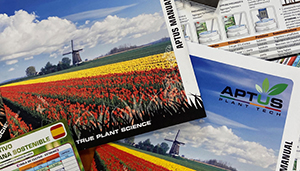PH Basics
The correct pH in is essential for optimizing your grow. You can measure pH in your substrate as well as in your nutrient solution. Some professional growers even as far as measuring the internal pH of plants with plant sap measurements! For the sake of this article we’ll start with the basics.
WHAT IS PH?
The pH scale is the universal measurement of acidity and alkalinity. It runs from 0 (being extremely acidic) to 14 (being extremely alkaline) and pH 7 is a neutral pH. Most plants prefer a neutral to slightly acidic substrate, which is roughly between pH 5,5 – pH 6,5.
The abbreviation pH stands for “pondus Hydrogenii “ or “potential Hydrogen”, which indicates that what’s actually being measured is the presence of Hydrogen ions in a solution. These Hydrogen ions directly affect the acidity of a solution.
WHY IS PH IMPORTANT FOR MY PLANTS?
Now we know what pH is, it’s time to take a look at how pH influences your plants’ growth.
Acidity greatly affects the absorbability and solubility of nutrients in your solution. To get an idea of the availability of nutrients at different pH values, see the image below.
WHAT HAPPENS IF MY PH IS NOT IN THE IDEAL RANGE?
When you pH is not at optimal levels it may cause deficiencies in some elements, but it may also cause toxicity. Iron for example can become available in toxic quantities when the pH is too low, but it will become unavailable when your pH is too high.
As you can see in the image above, alkaline substrates can cause deficiencies in Iron, Manganese, Copper, Zinc, and Boron.
Acidic substrates on the other hand are more prone to deficiencies in Phosphorus, Calcium, and Magnesium. And not only Iron can become available in toxic quantities at low pH, that also goes for Aluminum and Manganese.
At the end of the day you want to grow your plants under the best possible conditions to optimize yield, flavor, and smell. Your plant needs all of the essential nutrients, and the unavailability of one element will prevent your plant from reaching its maximum genetic potential.
So if you aren’t already measuring your pH in your garden, start today!






